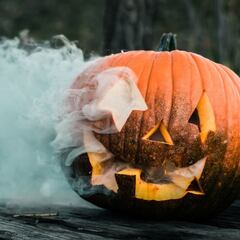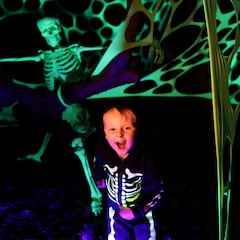Is All Saints’ Day the same as Halloween? Who celebrates each one?
Incorporated into the ancient Celtic festival of Samhain, the welcoming of the “dark half of the year,” to Christianize the pagans.


While many think that Halloween is an American invention, its roots can be traced back several thousand years to the ancient Celtic festival for the night when the spirits of the dead could walk among mortals. The name of the festival, which takes place on 31 October, has changed since being incorporated as part of the Christian holiday All Saints' Day, to become All Saints' Eve or All Hallows' Eve, better known as Halloween.
According to dictionary.com, the word “Halloween” is a “direct derivation of All Saints' Day” with “All Hallows” in Old English meaning “the feast of the saints.” There are some differences between Halloween and All Saints' Day, however, they are linked.
The tradition of Halloween originated partly with the ancient Celtic festival of Samhain (pronounced “sow-win”), a festival to welcome the “dark half of the year.” People would light bonfires and wear costumes to ward off spirits of the dead. The custom of “trick-or-treating” had some origins in Christian rituals. There was an English custom of knocking on doors to ask for a “soul cake,” after which the recipients would offer prayers for the dead of the household. With time, the idea evolved to a light-hearted warning that a prank would be performed if the resident did not provide a treat.
Happy Halloween.. 😅 pic.twitter.com/9uAsO2wDJd
— Buitengebieden (@buitengebieden) October 31, 2024
Nowadays, Halloween is widely celebrated as a light-hearted day of costumes, decorations, carved pumpkins, and door-to-door trick-or-treating, in which candy and other treats are given to costumed children.
What Is All Saints' Day?
All Saints’ Day takes place on November 1. It is a day when many Christians remember those they consider saints and martyrs who have died. It is considered a “holy day of obligation”.
In 609 A.D., Pope Boniface IV reconsecrated the Pantheon in Rome. He renamed it the Church of St. Mary and the Martyrs. He established the anniversary as a day of celebratory remembrance for all of the Church’s martyrs. Later, Pope Gregory III changed the date to November 1 during the dedication of St. Peter’s Basilica to “all saints,” in an effort to combat pagan worship.
All Saints’ Day in Sweden🕯️https://t.co/x9VJL0ctFO pic.twitter.com/X8gSXYsBA2
— Visit Sweden (@visitsweden) October 31, 2024
Related stories
All Saints’ Day is also known as All Hallows' Day. Patrons would dress up in costumes of evil spirits or saints in order to depict the battle between good and evil.
The Day of the Dead
In many Latin American countries, November 2 is a national holiday - the Day of the Dead, or Dia de los Muertos, the climax of the Days of the Dead. It’s the climax of three days of celebration: All Hallows' Eve, All Saints’ Day and All Souls’ Day. People will dress up as skeletons as a way of remembering the dead and celebrating their ancestors.


Complete your personal details to comment